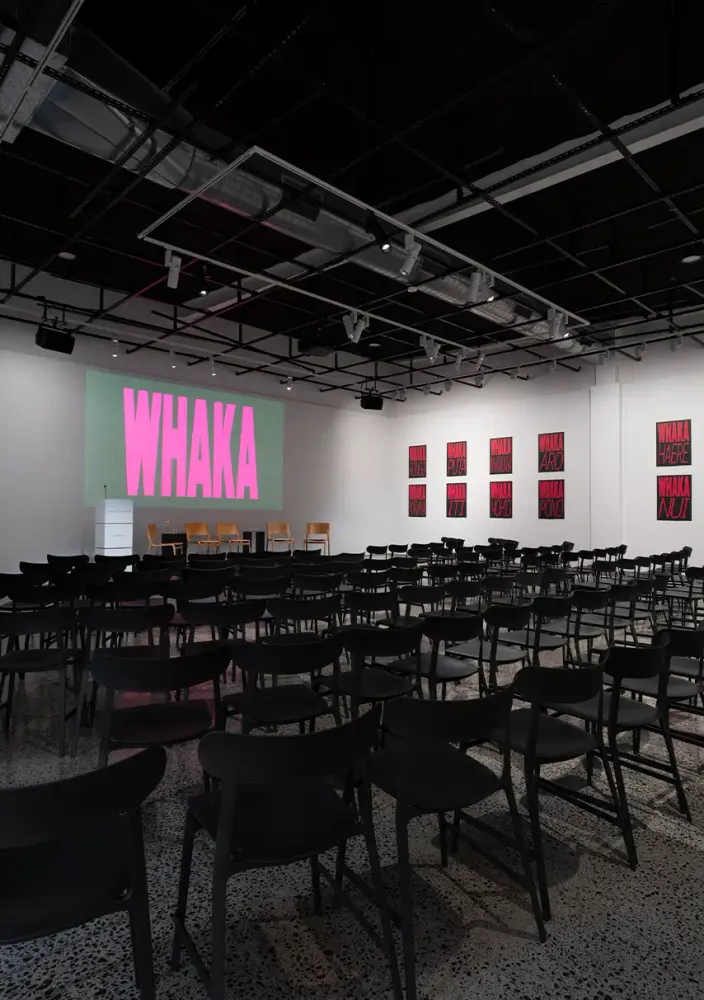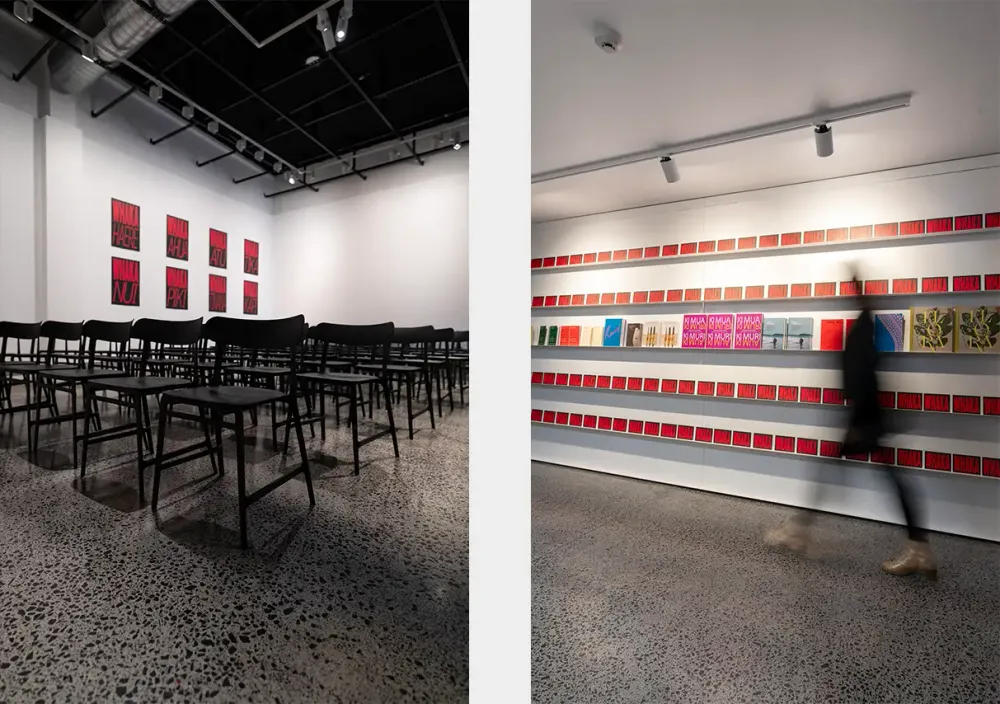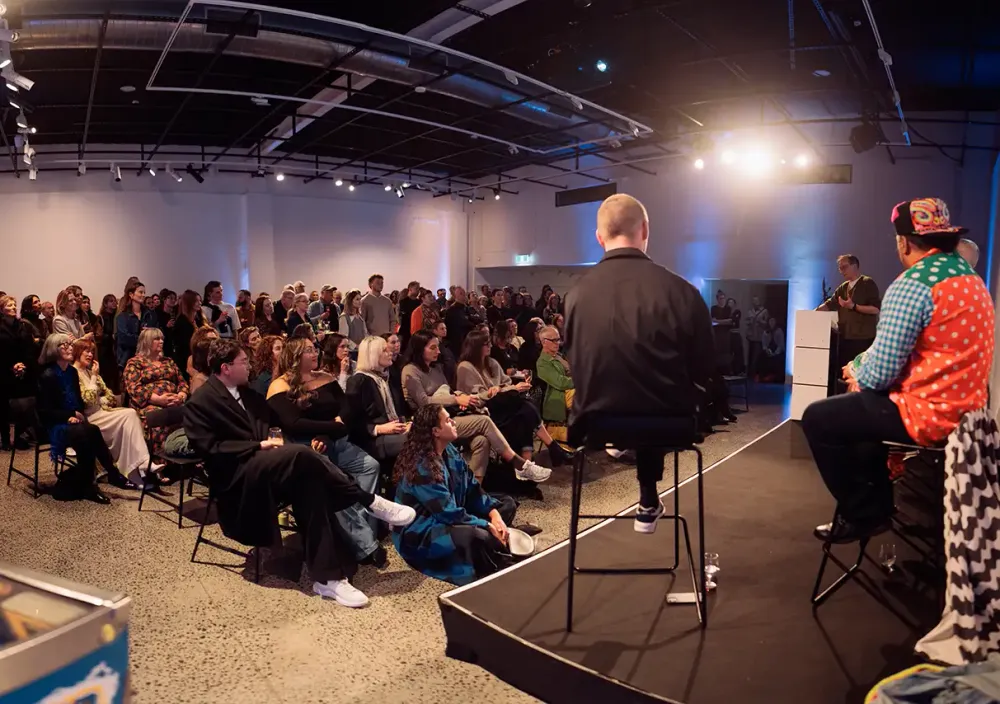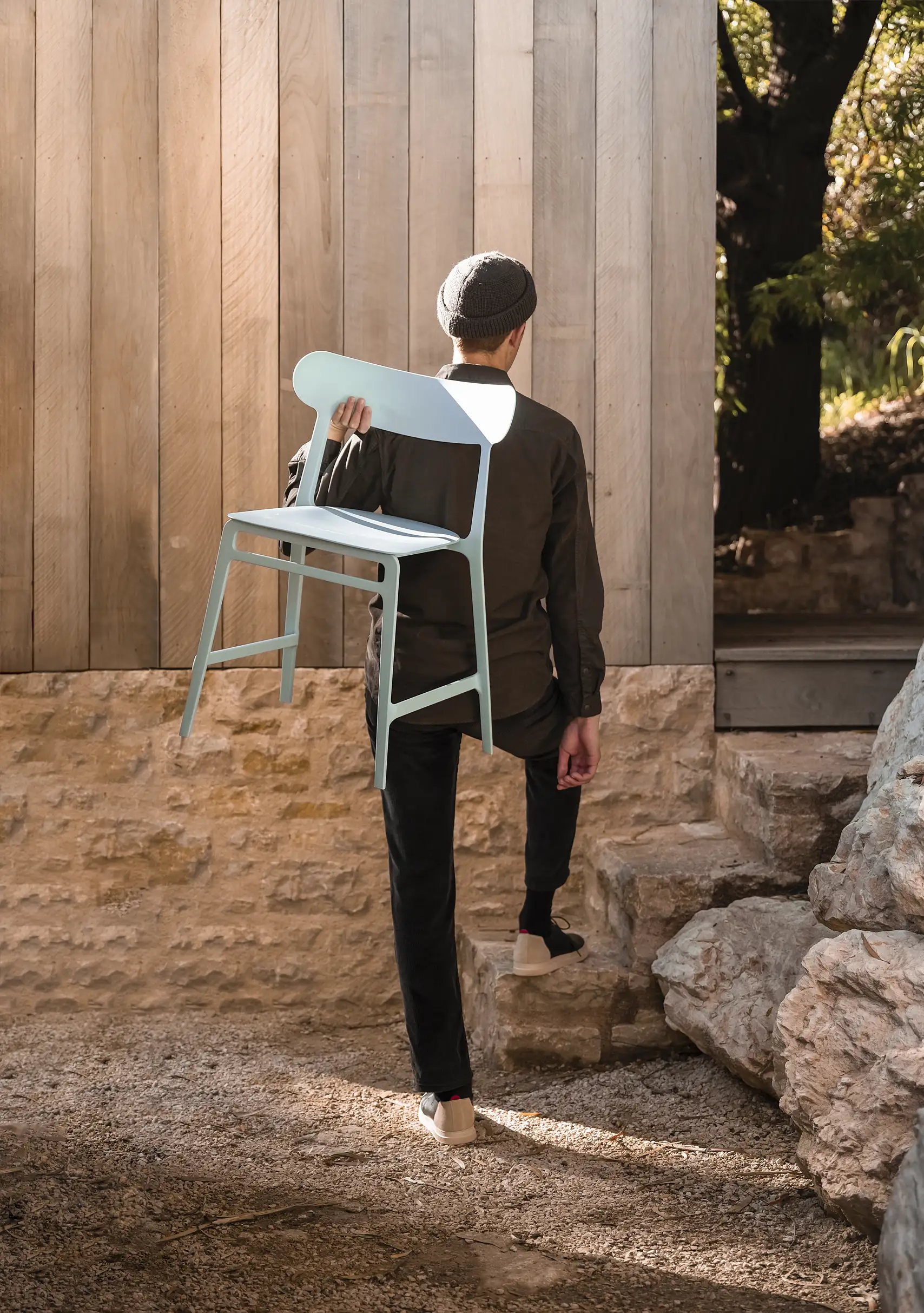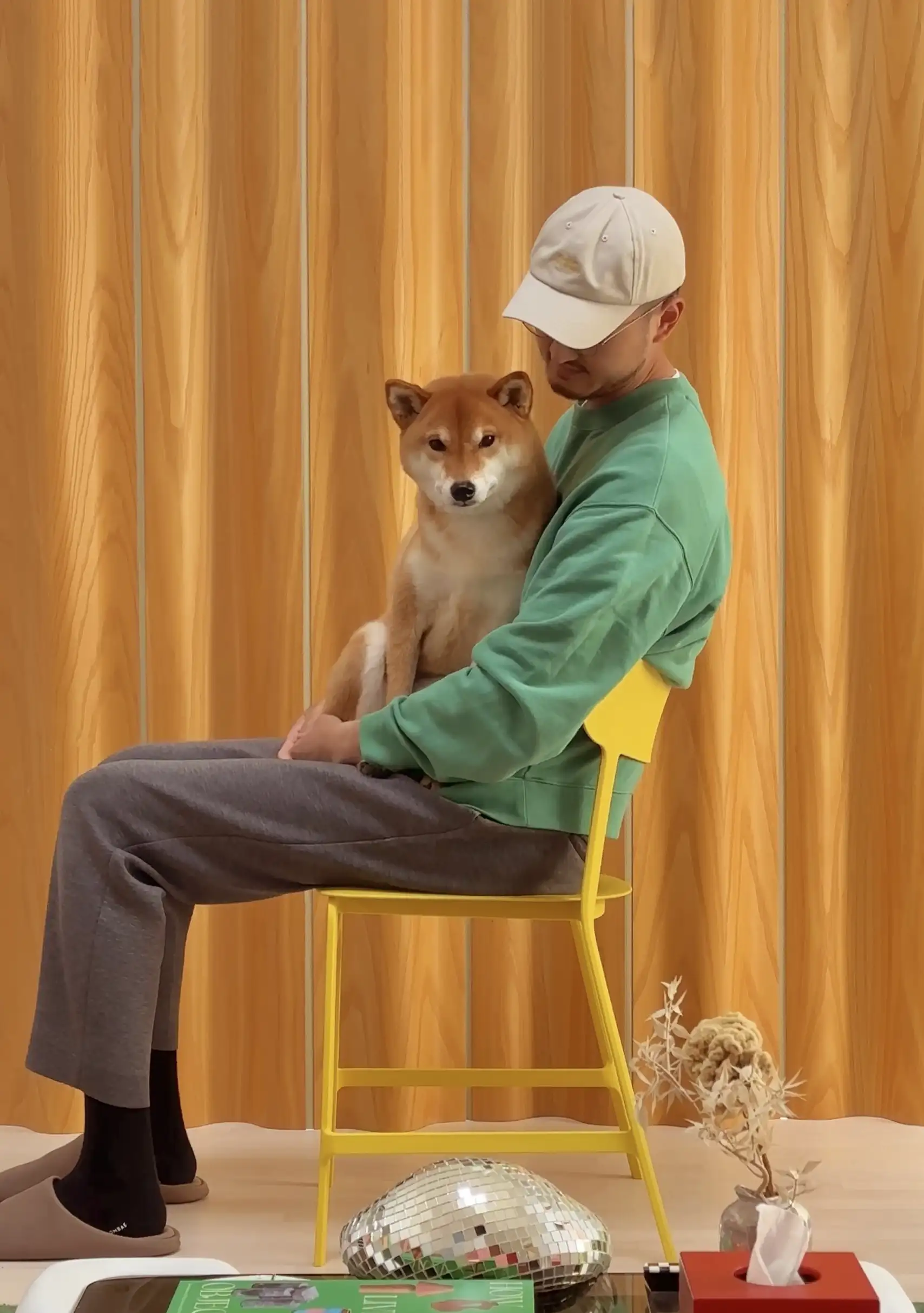Stories
Interview: Objectspace—Art, Community, and Sustainable Design
Based in Tāmaki Makaurau Auckland, Objectspace is Aotearoa, New Zealand’s leading gallery dedicated to design, craft, and architecture. It celebrates the diverse voices in contemporary art, craft, and design. We spoke with Communications and Partnerships Manager Victoria McAdam to explore the gallery’s commitment to supporting local design, including its choice to incorporate Noho's Lightly chairs into events and exhibitions.
Objectspace has played a significant role in Auckland’s art scene. Could you share how the gallery’s mission has evolved over the years and how your exhibitions reflect that?
Objectspace opened in 2004 after a working group of prominent local makers, art writers and curators identified a significant lack of support for the fields of craft, applied art and design – the intention from the outset was to create a gallery that supported excellence and experimentation in these fields. In 2017 Objectspace underwent a major expansion, relocating to the architecturally refurbished premises on Rose Road in Ponsonby, bringing a shift in scale to four exhibition spaces alongside a dedicated public programming space and library.
This expansion led to a wider disciplinary focus, with the gallery's work now encompassing the fields of design, craft and architecture. This wider focus is reflected in our programme of exhibitions, events, publishing and the sector service and relationship development work we do both nationally and internationally. As our audience has grown and diversified, we’ve worked hard to offer a wider range and higher volume of programmes. At its heart, Objectspace has always been an organisation driven by makers, and by the concerns of the disciplines that it serves – we exist to celebrate and advance practice and thinking in design, craft and architecture. We want to see kōrero about these disciplines in our national vernacular and see understandings of material culture growing and including new perspectives.
—
How do design and function play a role in shaping the spaces within Objectspace for exhibitions and events? What qualities do you look for in the furniture you incorporate into the gallery?
Our exhibitions often incorporate innovative exhibition design and custom-made display furniture. The star of the show is the artwork or objects, and we incorporate exhibition furniture that elevates the work without dominating it or relates to conceptual or aesthetic qualities of the practices we’re looking at in any given project. For our permanent furniture – which you’ll find hauled out for events and in our reception and office areas, we favour simple, elegant designs that reflect our local design industry. Our event chairs from Noho are workhorses, unstacked at least 70 times a year for a variety of event programming – from international keynote lectures to hands-on workshops. Our reception units and surrounding fitout were designed for our Rose Road venue by designer Clark Bardsley when he was at Alt Group.
How important is it to Objectspace to showcase and support locally designed and made products from Aotearoa, New Zealand? What role does this play in the gallery's mission and values?
Our disciplinary focus includes product design, and it’s vital for us to support local talent in this field. Recent exhibitions such as The Chair: a story of design and making in Aotearoa and How to make a home, along with the Living Room exhibitions in our Christchurch satellite gallery, illustrate our love of and fascination with furniture and functional object design in Aotearoa. Our local design industry is incredibly diverse in the disciplines and sectors it encompasses, and is world-class in quality – it’s a serious joy to work with and support practitioners designing and making in Aotearoa.
—
The Lightly chairs are used for various events in the gallery. What made you choose these chairs, and how have they contributed to the experience within the exhibition spaces?
The Lightly chairs have been an absolute game changer for us – it’s no exaggeration to say our team were genuinely thrilled to see the new chairs arrive. We deliver a wide range of public events with a small staff force and we need to be dynamic in our utilisation of space; the Lightly chairs are, well, lightweight, but also very strong and durable, making them ideal for moving between our various gallery spaces en masse. Their scale and form has enabled us to maximise audience numbers for our events – they’re comfortable yet spacially economic – helping us to welcome as many people as possible to our events.
—
Recently, the Lightly chairs were used during the Ockham Lecture Te Tīmata: To begin, which opened the Pohewa Pāhewa Māori Design Symposium. How did the Lightly chairs perform in terms of comfort and versatility throughout the event, particularly for attendees who spent extended periods seated during the symposium?
The Lightly chairs are very well-suited to our half-day or all-day symposium events – having tested them out ourselves, we can confidently say their shape is ergonomic and they support a nice, relaxed posture.
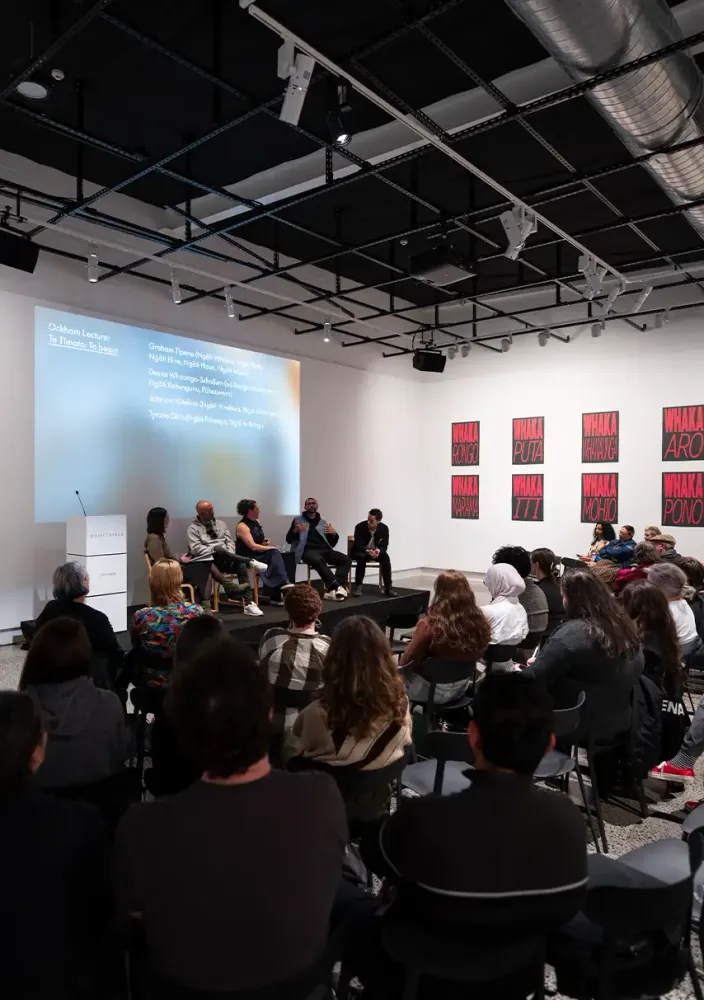
Sustainability is an important part of Noho’s ethos. How does Objectspace view the role of sustainability in contemporary design, and how does this influence the way you curate your exhibitions?
Sustainability is an integral element of contemporary design. Our engagement with sustainable design practices can be seen in our strong support of local practitioners – many of our exhibiting artists utilise slow, labour-intensive craft processes that incorporate the reuse of materials, minimise wastage, and result in objects and furniture that are designed and made to be loved and enjoyed for a lifetime. Our selection of event, office and reception furniture also prioritises longevity – we’re looking for practical, durable elements that will continue to perform well and look great for many years to come. In terms of exhibition making, it’s a consistent part of the brief that the lifetime and future of new structures is considered, and that wherever possible, existing materials are used. If you visit Objectspace over a year, you might spot that a wall built for one exhibition becomes the floor in a show three months down the line.
—
Objectspace has a strong connection to the local community. How do you see the gallery’s role in fostering conversations around art, design, and sustainability in Aotearoa?
Local discussions around design and sustainability that emerge in response to our exhibitions and public events is fantastic to see, and so important to encourage. We work hard to ensure broad accessibility in terms of our programme content, fostering these kinds of conversations across different communities and engaging new audiences. A great example of this was seen in the visitor response to The Chair: we had furniture designers and architects who were keen to talk about technical elements of the furniture and the qualities of specific materials, collectors who valued the outstanding craftsmanship, and local residents with a passion for interior décor who had great fun envisioning which chairs they’d choose to incorporate in their own homes. Offering different access points is key – this could be through subject matter, exhibition display, writing around a project, etc. Our exhibitions champion exemplary craft and design, demonstrating the richness and joy that can be found in unique, wonderfully made objects and designs that are made to last, and last beautifully.
—
Do you have any standout moments or favourite exhibitions where the design of the space, including the use of Noho’s furniture, played a crucial role in the visitor experience?
As our public programming has continued to grow and become more ambitious, our ability to host large audiences for extended periods has become crucially important. Quality hospitality and a welcoming atmosphere is something we are always striving for; the design of our event environments and the furniture we incorporate contribute to an overall sense of ease and generousity. The one piece of feedback we get more than anything else is around our hosting. The amount of feedback we’ve had on that is profound, and every element contributes to that – but we find offering someone a seat is a great start.
Breaking Ground – our three-day ceramics symposium earlier this year – clearly demonstrated how versatile and well-suited Noho’s Lightly chairs are for Objectspace. The symposium began with a full day of panel discussions and talks, with attendees staying with us throughout the day, spending many hours comfortably seated. The relaxed-yet-attentive posture that’s supported by the Lightly chairs was a huge asset in this context; it’s far easier to maintain enthusiasm through a full day of speaking events if you’re listening from a well-formed chair. The second day of Breaking Ground featured three large-scale ceramics workshops – here the Lightly chairs were utilised by participants as they listened to expert practitioners and learned new techniques in clay, illustrating how the chair’s design can accommodate more active postures. Our symposium concluded with a ceramics market day, where the Lightly chairs provided hard-working stall holders with welcome respite between customers. Throughout Breaking Ground, Noho’s furniture provided a clean, minimal aesthetic that let makers and their mahi take centre stage.
—
For more on Objectspace, visit objectspace.org.nz
Photography: Seb Charles & David St George
